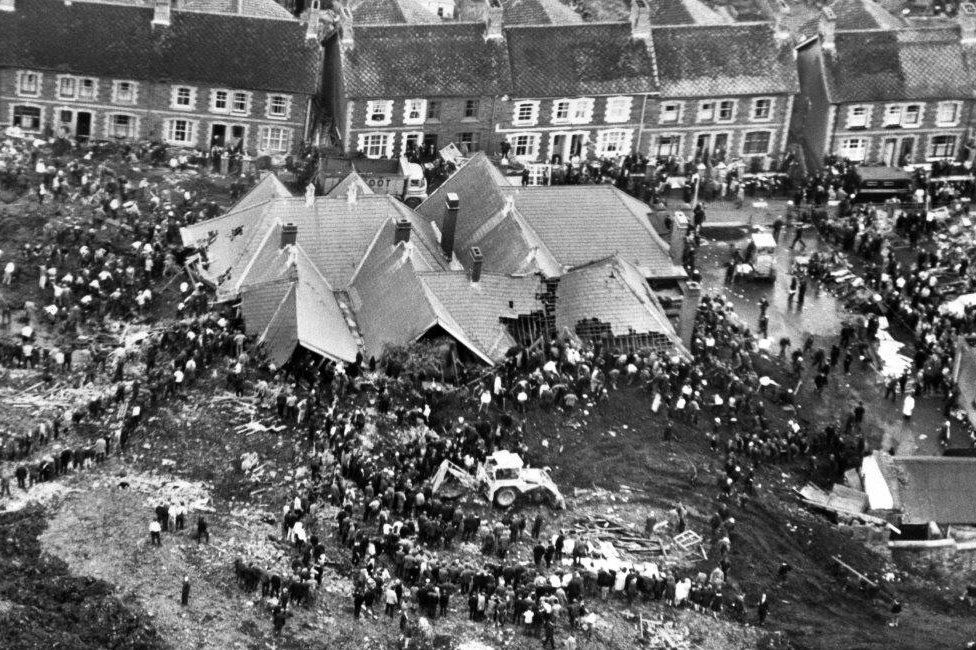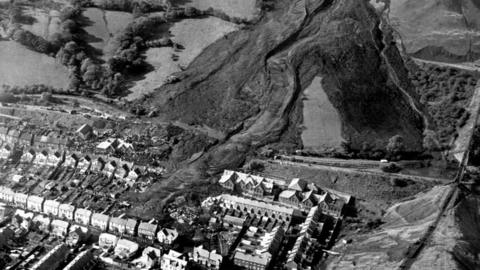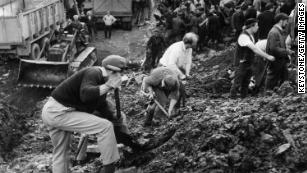The Aberfan Disaster: A Day That Shook Wales In 1966
On a seemingly ordinary Friday morning, October 21, 1966, an unimaginable tragedy struck the small, close-knit Welsh village of Aberfan, near Merthyr Tydfil. What began as a routine day for the children of Pantglas Junior School and the residents of this mining community quickly turned into one of the most harrowing and devastating events in British history. The Aberfan disaster, known in Welsh as Trychineb Aberfan, was the catastrophic collapse of a colliery spoil tip, an event that would forever scar the landscape and the hearts of a nation.
This blog post delves into the true story of the Aberfan disaster, remembering the lives lost and the profound impact it had on a community deeply rooted in the coal mining industry.
Aberfan: A Village Forged by Coal
In 1966, like many villages in South Wales, Aberfan's lifeblood was coal. The village was dominated by the adjacent Merthyr Vale Colliery, a hub of activity that provided livelihoods for generations. The byproduct of this extensive mining was coal waste, which was systematically tipped onto the mountain slopes above the village in a series of massive slag heaps. These spoil tips, seemingly innocuous piles of excavated mining material, loomed large over Aberfan, a silent testament to the industry that sustained the community.
Unbeknownst to many, one particular tip, Tip 7, had been created on a mountain slope directly above the village and, crucially, overlaid a natural spring. This oversight, combined with the inherent instability of the waste material, set the stage for a disaster of unprecedented scale.
The Fateful Morning of October 21, 1966
The Ticking Time Bomb
For days leading up to the disaster, heavy rain had lashed down on the Welsh valleys. This relentless downpour played a critical role in the tragedy. The water, unable to drain effectively, began to build up within the porous material of Tip 7. As the ground became increasingly saturated, the stability of the massive coal heap was severely compromised. The natural spring underneath further exacerbated the problem, creating a lubricated layer beneath the enormous weight of the spoil.
The Avalanche of Black Slurry
At approximately 9:15 AM on October 21, 1966, the unthinkable happened. With a terrifying roar, nearly 140,000 cubic yards (or more than 150,000 tonnes) of black slurry, a mix of coal waste, shale, and water, detached from the mountain. This immense landslide of coal waste, an "avalanche of coal waste" as it was described, cascaded down the hill at an incredible speed. It took just five minutes for this monstrous wave of debris to descend upon the unsuspecting village below.
Unimaginable Devastation
The destructive force of the sliding tip was absolute. It destroyed everything it touched. The first structures to be engulfed were a farm and several houses. But the primary target, tragically, was Pantglas Junior School, where children had just settled into their morning lessons. The school building, along with its pupils and teachers, was catastrophically engulfed by the relentless tide of coal waste. Surrounding houses were also swallowed whole, leaving a scene of utter devastation.
A Community Decimated: The Human Cost
The immediate aftermath was a scene of chaos, heartbreak, and heroic efforts. The disaster resulted in a staggering loss of life, forever etching October 21, 1966, into the collective memory of Wales and beyond. A total of 144 people were killed, making it one of the worst mining disasters ever seen in Britain, and indeed, the worst mining-related disaster in British history.
The casualty figures are particularly poignant:
- 116 children: The vast majority of the victims were primary school-age students, innocent lives cut short in an instant.
- 28 adults: These included teachers, school staff, and residents of the engulfed homes.
The close-knit and thriving Merthyr Tydfil community in the south Wales valleys was decimated. Families lost multiple children, entire generations were wiped out, and the fabric of village life was torn apart. The sheer scale of the loss, particularly of so many young lives, sent shockwaves across the world, prompting an outpouring of grief and sympathy.
The Aftermath and Enduring Legacy
In the wake of such profound loss, the immediate focus shifted to rescue efforts, though hope quickly faded as the enormity of the slurry became apparent. Soon after, attention turned to accountability and understanding how such a catastrophe could have occurred.
The Tribunal of Inquiry
Just five days after the disaster, on October 26, 1966, the Secretary of State for Wales appointed a Tribunal to inquire into the causes of, and circumstances relating to, the Aberfan disaster. The Tribunal's findings were damning, concluding that the National Coal Board (NCB) was responsible for the disaster due to a lack of understanding of the dangers posed by the spoil tips and negligence in their management. This inquiry was a pivotal moment, highlighting systemic failures and leading to significant changes in safety regulations for mining waste disposal.
A Lasting Mark on History
The Aberfan disaster remains one of the most tragic events in modern British history. It stands as a stark reminder of the human cost of industrial negligence and the vulnerability of communities built around hazardous industries. The memory of the 116 children and 28 adults lost on that dreadful day continues to resonate, serving as a powerful testament to the importance of safety, accountability, and the enduring strength of a community bound by shared grief and remembrance.
The true story of the Aberfan disaster is not just a tale of collapse and destruction, but also one of profound human resilience, the unwavering support of rescuers, and the enduring legacy of those who perished. It is a story that demands to be remembered, not just as a historical event, but as a lesson learned at an immeasurable cost.
Summary of the Aberfan Disaster:
The Aberfan disaster, occurring on October 21, 1966, was a catastrophic event in the Welsh mining village of Aberfan. A colliery spoil tip, saturated by heavy rains and built over a natural spring, collapsed, sending a massive avalanche of coal waste down the mountain. In just five minutes, it engulfed Pantglas Junior School and surrounding houses, killing 144 people. The vast majority of the victims were children (116), alongside 28 adults, decimating the close-knit community. The disaster prompted a major Tribunal of Inquiry, which attributed blame to the National Coal Board, leading to significant changes in industrial safety. Aberfan remains a poignant symbol of industrial tragedy and a powerful reminder of the importance of vigilance and accountability.

Aberfan disaster: The Queen's regret after tragedy - BBC News

Aberfan disaster: 50th anniversary marked with silence - BBC News

Aberfan: What was the Welsh mining disaster, seen in 'The Crown' - CNN